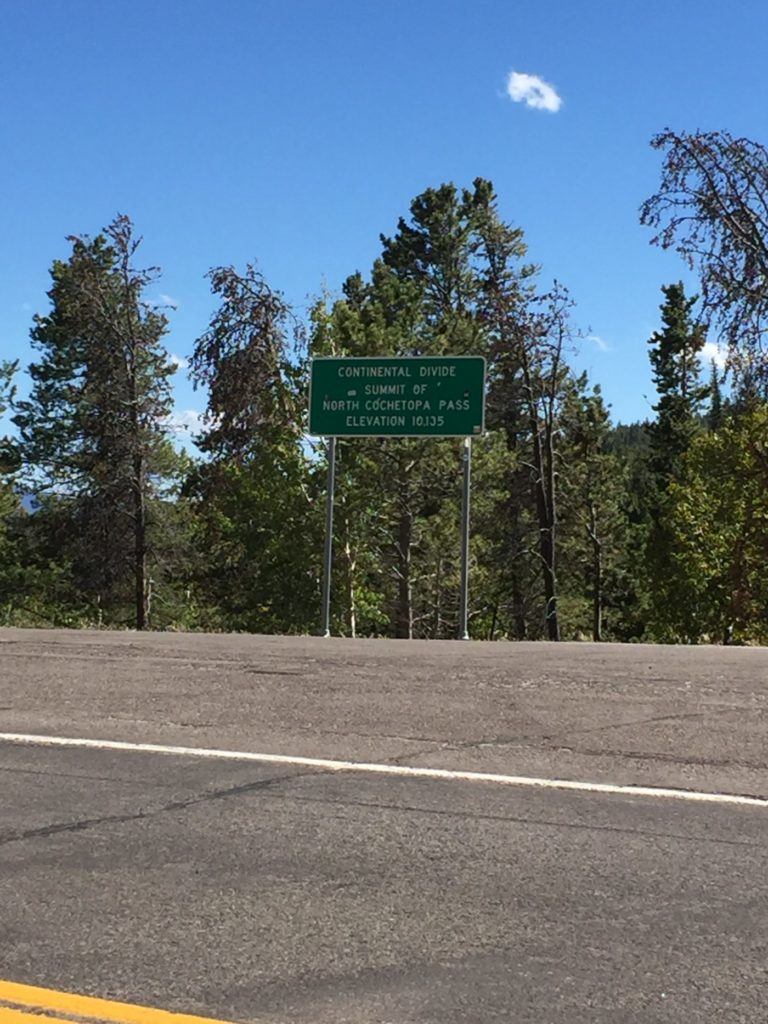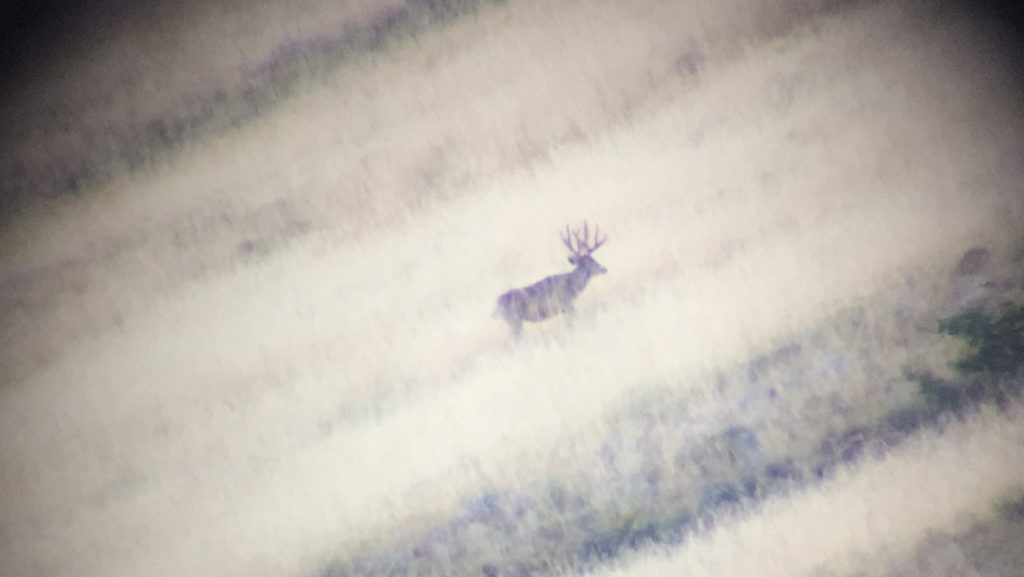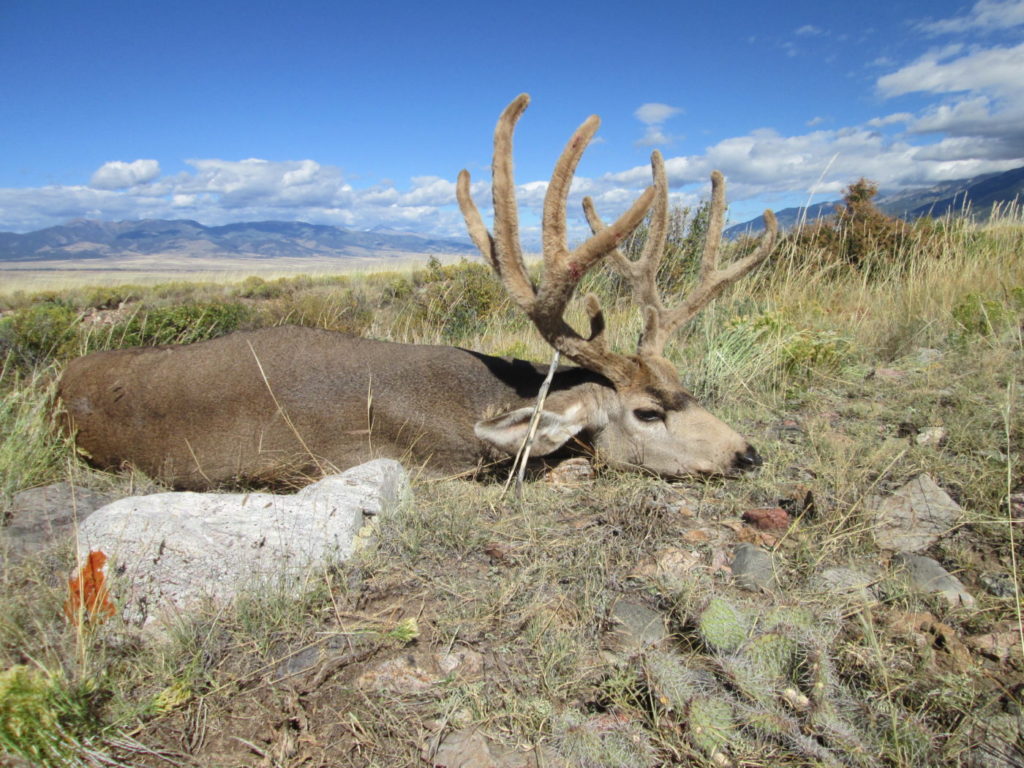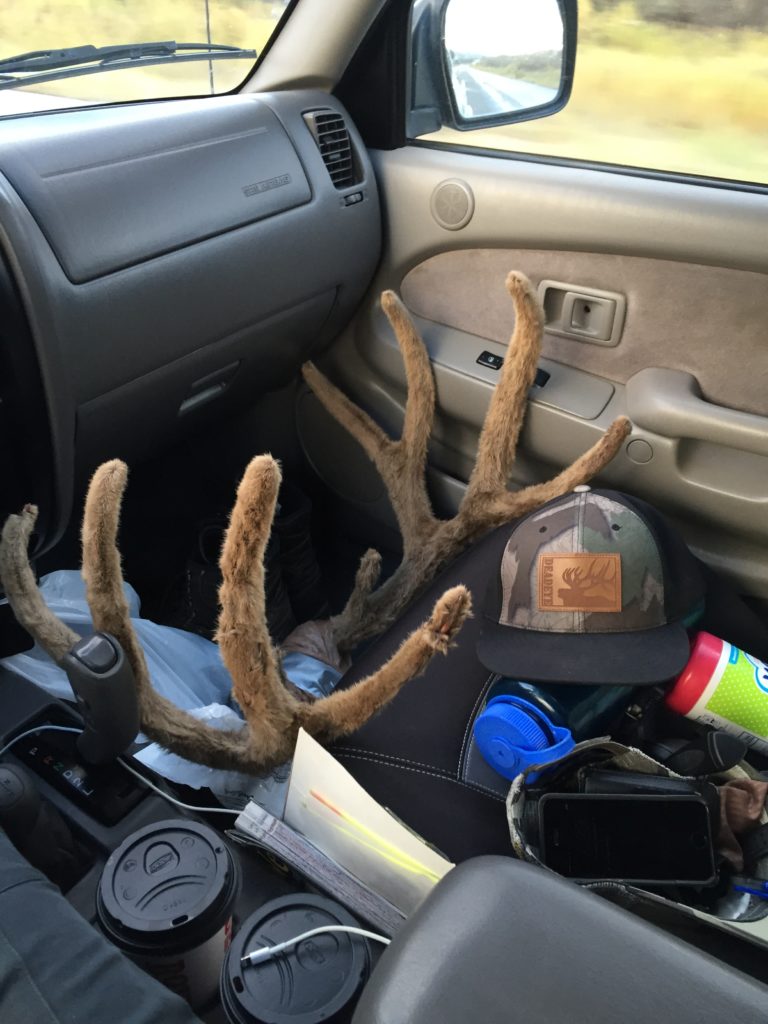The Back Story…
For as long as I can remember, my eyes have been drawn to rugged mountaintops, low-lying saddles, and windswept ridges. Call it a habit. Call it conditioning from a lifetime of searching for game. My wife would call it gawking – especially when behind the wheel. Call it what you will; I love to find and hunt big game. Hunting has always been a part of my life. I was born and raised in western Nevada and cut my teeth chasing mule deer, antelope, elk, and sheep. I have been fortunate to be successful in my hunting career. I grew up with a father that, above anything, wanted to instill in me his respect and love for the outdoors. Family and friends possessed that same passion and nurtured those values by letting me tag along on their hunts. In addition to a solid foundation, I have always been willing to step outside of my comfort zone, especially if it involved hunting opportunities.
This passion for pursuing game in wild places is one shared by friends and colleagues. As it often happens, conversations at the office, in the field, or over a cold beverage lead to talking about hunting in new and faraway places. Be it a different unit on the other side of one’s home state, or an entirely different nation, I often found myself thinking of places to go and animals to chase but never following through. Whether it was due to money, time, or other commitments, I could not seem to put a plan into action. That is, until I had an epiphany about two years ago. It was so simple yet so elegant. Just go. Stop thinking about it and do it.
In 2015 I’d drawn a muzzleloader tag for Colorado’s game management unit 82 on the west slope of the Sangre de Cristo Mountains. This unit is known for big bucks above timberline and even more for its steep, rugged terrain. Many of the peaks in the range are above 12,000 feet, with a handful surpassing the coveted 14,000-foot mark. I had put in with a good friend of mine, but due to a mistake in our application, we weren’t put in as a group. Consequently, I drew and he did not. To further complicate matters, he’d also drawn a Wyoming mule deer tag for the same timeframe. Perfect. We’d both be going solo.
In the months leading up to opening day, I could not make up my mind on whether or not I was going to go through with the hunt. One day I would be completely committed, and the next I’d make up an excuse in my mind that would prevent me from going. For some reason, I could not commit, and it bothered me. The months, weeks, and days ticked off the calendar until I was only a few days out from the opener. Decision time was close, and I still couldn’t make up my mind. Finally, on Sunday afternoon – a day before I was to leave – I pulled the trigger.
My ‘aha’ moment was in Lake Tahoe on a fishing boat. I had just spent the last few days at an expo and awards banquet for work when I came to the realization that all I really needed to do was load up my truck and hit the road. Simple. I’d asked for the time off work, I’d poured over maps, consulted with Colorado Parks and Wildlife, scouted Google Earth, and yet I still couldn’t bring myself to commit. Why? This would be my first trip hunting out of state. My first trip hunting solo. My first trip backpack hunting. I was afraid of the unknown, and that bothered me to the point that I finally forced myself to commit. My mind was made up! All I needed to do now was pack my gear and head for Colorado. And, buy a muzzleloader. That was one very important piece of the puzzle.
I told myself that if I were successful in drawing the tag, I would just buy a muzzleloader at that time. I’d procrastinated so badly over the last few months that I hadn’t even purchased the most important item on my list! On my way home from Tahoe, I stopped off at Cabela’s and picked up a muzzleloader, powder, and projectiles, and high-tailed it for home to pack all of my gear.
When I got home, I broke out the muzzy and started to put my stuff together when I noticed it was missing a ramrod – a slightly important piece. Nearing panic I called the gun counter at Cabela’s and relayed my predicament. The representative I had dealt with asked where I lived. I told him and he drove the ramrod to me on his way home from work. Talk about customer service! I thanked him a bunch and then got back to loading my truck in preparation for the next day’s trip.
The following morning, with all my gear packed up, I struck out east towards Colorado. I’d planned to split the drive into two days, stopping in Grand Junction that evening. Along the way I stopped in Elko, NV to sight in my new muzzleloader. I shot the gun five times, cleaned it, and was back on the road about an hour later.
I arrived in Grand Junction late that evening in a raging thunderstorm. I checked into my hotel and transferred my gun and optics to the room for the night. After a quick bite to eat, my head hit the pillow and I was out. Exhausted from a long day of driving I slept well; one of those nights when you get a full night’s sleep in what seemed like the blink of an eye. I transferred my gear back to the truck and headed for the sporting goods store to buy some blaze orange I’d forgotten to purchase in Reno. At the store, I struck up a conversation with one of the reps when I asked for help locating a map for the area I was hunting. He informed me that there was a guy who worked there that had grown up in the small town right at the base of the Sangre De Cristo’s. He called the gentleman – Clint Bowers – over, and we all chatted about the rough terrain and good places to access the backcountry. Clint marked a few areas on the map for me to check out and gave me his recommendation on how to approach the hunt. I was fortunate to have made Clint’s acquaintance, and his advice and recommendations were key to my success.
I headed south out of Grand Junction for my hunting area and arrived in town late that afternoon. Instead of rushing, I decided to stay in town that evening and then get on the trail at first light the following morning. That night, I packed my gear for five days in the backcountry. I checked and rechecked that I had not overlooked anything and finally went to sleep late into the night.
I tossed and turned until my alarm went off at four. I rolled out of bed, loaded my stuff, and was at the trailhead well before first light. I decided that instead of heading into unfamiliar country in the dark that I’d wait for it to get light. I kicked my seat back and shut my eyes only to wake up with the sun peeking over the ridgeline. As I tried to get my bearings, I looked out the door and to my surprise, there was a deer feeding a few hundred yards away. Instantly, I was back on task. I quickly grabbed my binoculars and spotting scope and began glassing my immediate surroundings.
I started picking up deer and antelope all around me. After ten minutes, I spotted a bachelor group of bucks feeding off in the distance. I quickly put the spotter on them and was pleasantly surprised to see a very nice, mature buck in the group. I watched the group for another 45 minutes until, one by one, they all bedded down behind a large patch of wild rose. I quickly looked over the terrain, checked the wind, and made a game plan.
The wind was blowing steadily and had increased substantially in the brief time I’d watched the group bed. It was blowing in my favor, and I had good cover as the bucks had bedded behind the wild rose, blocking me from their view. The only obstacle that stood between my quarry and I was a lone antelope buck. I put my pack on, grabbed the muzzleloader, and headed for the bedded group of deer.
Half way to the bedded bucks, I encountered the antelope. This was the make-or-break point in the stalk, and lucky for me, the antelope decided to evade me by running down wind to try to catch my scent. This took him away from the bucks and secured the remainder of my approach. I quietly slipped off my pack and ranged the patch of wild rose where the bucks had bedded down. I was 80 yards out and comfortable with that shot distance.
With the wind blowing steadily in my favor, I continued to close the distance. The last time I ranged the group, I was 40 yards away. Suddenly, I caught movement from behind the rose patch. The largest buck stood up to change beds and began feeding on the rose as he adjusted his positon. I waited for him to give me a clear view of his vitals.
I took a deep breath, settled the open sights just behind his exposed shoulder, and squeezed off my shot. The primitive gun barked and the smoke from the black powder obstructed my view of the buck. I took a few steps to the side and was able to see the smaller deer running away but did not see the larger buck with them. I took a minute to settle my nerves and wait for the excitement to wash away. I sat down and tried to reload my muzzleloader but my shaking hands required a few more minutes of measured breath to steady myself enough for the task.
After I reloaded my weapon, I gathered myself and began to approach where I had last seen the deer. A brief scan of a low-lying wash revealed the expired buck. After saying a few quick words of thanks, I put down my muzzleloader and put my hands on a very respectable buck, in full velvet no less! Being early September, I didn’t waste any time in taking pictures and then processing the animal. I worked quickly and diligently to get the hide and meat off the buck to let it begin to air out.
After skinning and quartering, I loaded him up in my pack and set off back for the truck. Once at the truck, I realized I had a decision to make, and time wasn’t on my side. The buck needed to be processed, and if I wanted to keep the velvet on his antlers, I needed to get him to a taxidermist. Soon. I did some fast math in my head and decided to make a cannonball run back home.
I made the trip in reverse order in two days just hours after I’d begun my hunt. There are a few lessons to be learned from my experience and hopefully some guidance and motivation to help you make the leap into branching out! I’ve compiled a few bullet points of things I’ve found useful in reflecting on my Colorado adventure:
Putting a Plan Together (Scope, Schedule, and Spend)
I am a construction project manager at a silver mine in northern Nevada. Over the last few years, I’ve developed a project manager’s mentality, and I try to break things down in a manner that is easily understandable and achievable. The best way I’ve found is to keep it simple using the three S’s: Scope, Schedule, and Spend. Applied to this situation, or hunting in general, this looks like the following:
Scope: Research species, state, regulations, travel, game management units, access, lodging, food, game care, processing, etc.
Do you want to hunt out of state?
This is somewhat a philosophical question but one worth considering. Do you apply for everything you can in your home state? If so, you need to consider what game you are willing to sacrifice. In my situation, it made sense to apply out of state because Nevada operates its draw using a points system which offers no over-the-counter opportunities. The opposite can also hold true; it is never too early to start building points in states like Nevada, Arizona, Colorado, and Wyoming. Even if you don’t plan to hunt this year or even next, apply for points and begin setting yourself up for success. On the flip side, if you live in Idaho, Montana, Oregon, or Washington, does it make sense to invest a lot of time and money trying to apply and be successful in another state? My urge to see what’s over the next ridge and inability to hold still would tell me yes! However, for some, hunting in-state may be just as fulfilling.
How far are you willing to travel?
The opportunities are bound only by your sense of adventure and (in my case) your bank account! You can head for Alaska on an epic moose hunt or one state over to try your hand at chasing Coues deer. Put some thought into it and make a list of places you’d like to try out.
By air, land, or sea?
This one is simple. Will you have to fly or drive to your destination? If hunting in Alaska, does it make sense to charter a boat to assist? Bottom line: figure out the best way to access your hunting area of choice.
Backpack trip, car camp, or hotel hunt?
This seems straightforward but it is an important decision to make. Things to remember: weather, time of year, proximity to your hunting area, and again, your budget all play important roles in this decision.
Are you a solo hunter?
In the case of my Colorado hunt, I was forced into being a solo hunter. This was a hunt of many firsts for me and a valuable learning experience. I’d never hunted out of state, never hunted with a muzzleloader, and never hunted alone. All pretty big milestones in a hunting career and daunting to take on at one fell swoop. I was stressed out over it at the time, but looking back, I wouldn’t change it for anything. It doesn’t hurt that I killed a great buck as a result. A couple things to consider are: does your area offer cell service, and how close is the nearest town (think hospital, auto shop, grocery store, fuel)? Other items to keep in mind are emergency response or rescue devices. Satellite phones are great but not cheap. You can rent them if you plan well enough ahead of time. You can use tools like the Spot GPS or an inReach device, which offers the same SOS services as Spot but will also allow SMS text messaging for a monthly fee. You and your family will feel much more comfortable keeping lines of communication available while you’re off by yourself chasing animals.
What weapon?
This question may seem obvious, but there are a few things you should consider. First, make sure you understand weapons regulations in the state you are applying. For example, I thought I could apply for the muzzleloader hunt and just use my bow. Not the case in Colorado. In addition, CO has some complicated regulations pertaining to what you can and cannot use for muzzleloader hunting. At the time of my hunt, you could use belted rounds but not sabots. You could not use pelletized powder and you could not use optics. Little nuances that you have to respect to avoid breaking the rules. Make sure you do your homework and study the state regulations on season dates for the weapon type as well as regulations for the weapons themselves.
Schedule: What time of year works best for your style of hunting, work schedule, home life, and traveling abilities to reach your destination? Additional things to think about in regards to schedule: how long will you have to travel to get your kill back home to get it in the freezer, or will it be necessary to take it to a processor immediately? Note: one thing I didn’t consider on this hunt was the possibility of the bucks to still be in velvet. After I harvested the buck, it was a mad dash back to NV in order to save the velvet. Knowing what I do now, I’d be prepared with a preservative of some kind. Your local taxidermist can steer you in the right direction and give you some pointers to ensure you keep the velvet in good condition. This is especially critical in the backcountry. One pro tip is to bring along some coban athletic non-stick tape (the tape sticks to itself nothing else). Wrapped around the deer’s antlers, it will help then survive packing out.
Spend: This one seems obvious, but there are many details that can be overlooked if you don’t drill them down. Things to think about are lodging and accommodations; are you going to camp your way to your hunting spot or stay in hotels? Camping is cheaper but requires a fair amount of due diligence ahead of time to plan where you’ll camp out and what extra gear you might need to make this work. Same goes for food. You may want to save cash by prepping your own food and avoiding restaurants along the way. This works but will require ample cooler space to ensure you’ve got the groceries you’ll need to hold you over until you make the trailhead. If your travel to and from home to the hunting grounds is a day or less, no big deal. If it is two days driving nonstop like I did, this may present some issues, especially if you don’t want to stop, unload/unpack/make a meal, and set up camp, especially if you are trying to get an animal back to the freezer and taxidermist.
Here are a few other items to consider in making your decision:
Applying for tags.
Do you want to apply in states that have a point system? If so, what are your expectations? Some states have a guaranteed draw after you’ve accumulated enough points. Others, like my home state of Nevada, never guarantee draw. I personally know people with 25 years of points who have not drawn a coveted California Desert bighorn sheep tag.
Trophy unit vs better draw odds.
You need to decide what your approach will be. Are you looking for your best chance at taking a trophy-class animal, or are you content with a lower chance at a mature animal, but better odds of drawing? If you are looking to hunt more often, as in my case, I recommend studying areas that may not be well known for producing record-class animals but are easier to draw. In most places, the chance for a mature animal is always there. It’s just how much effort and time you’re willing to invest to make it happen. Luck never hurts either!
One thing to remember: point creep is somewhat of a buzz phrase these days but should still be considered when applying for trophy units. One good example of point creep is applying for places like the Arizona Strip. If you are in your late-twenties and just now starting to apply (like me), your chances of drawing are very slim. The reason being that there are so many other people ahead of you in the points system that you’ll never catch up to the max points required to draw such a sought-after tag. If you have kids, start applying them young to build those points up!
How much are you willing to spend?
Applying in multiple states doesn’t require an astronomical amount of money but it isn’t cheap either. I recommend doing your research, figuring out what each state’s minimum required investment is, and then putting a budget together around that. Utah, Nevada, and Arizona do not require you to front any money except for that year’s hunting license and a nonrefundable tag application fee. Some places like New Mexico require you to front the total amount to apply but will refund your account if you are unsuccessful (including the hunting license itself if you check the box to be refunded if unsuccessful). A word of advice based on experience: warn your wife before you put $6,000 on the credit card – refundable of course!
Execute Your Plan
The last thing to do is execute! I find myself being wrapped up in a lot of the details and what-ifs. Call it wisdom, getting smarter with age, or just learning from my own bonehead mistakes; I’ve realized that if I wait until I have put together the perfect plan, I’ll never do anything. I’ve learned that things will never go according to plan and that if you keep that in mind, you’ll be fine. I was planning to spend five days in the backcountry of Colorado chasing mule deer but fate had a different plan in mind. I was able to take a great buck before I even hit the trail. Not what I was planning, but one in the hand is worth two in the bush. Had this been one of many out of state trips and had I killed lots of big mule deer, I probably would have taken only photos of the deer and continued on my journey. However, in this case, the gift horse was staring at me and no way was I going to look him in the mouth!
A couple of other lessons learned:
Local knowledge is huge.
I can’t thank Clint enough for helping me out. His information was a huge help and I am fortunate to have made his acquaintance. Reflecting on my good fortune while driving home, I came to realize that this is not a bad tactic. How many times have you been in your local sporting goods store and overheard or chatted with someone about a great tag you got or a big bull you saw? Don’t overlook the age-old method of bullshitting. It just might turn out in your favor.
Stop overthinking.
Jump in with both feet first and don’t evaluate it to death. I believe I’ve saved the best piece of advice for last. Stop overthinking it. You can make anything work regardless of the situation (this goes beyond just hunting). You can spend countless hours on Gohunt, pouring over maps, and looking at Google Earth until your eyes bleed, but if you don’t get in the truck and make a stab at it, you’ll never know what you’re capable of. Don’t get too caught up in the details and don’t evaluate things so much that you never get started. Understand that nothing will ever go according to plan and that you’ll have fun regardless of whether or not you kill a giant. I live by this mantra and cannot stress it enough. Keep a positive attitude, be nice, and fake it ‘til you make it!








